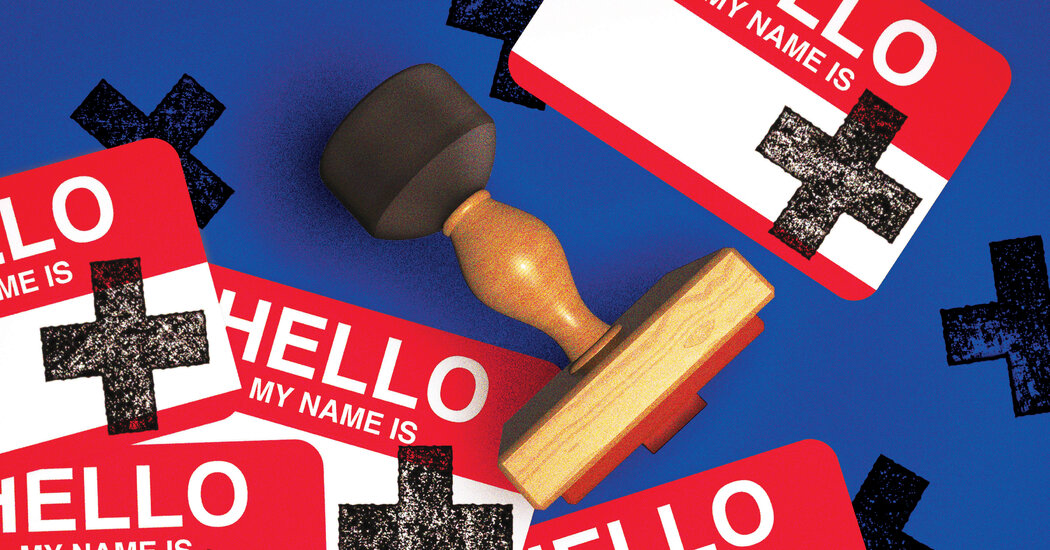
Maybe Pert Plus was on to something. Ditto for Puffs Plus.
The year was 1987 when the shampoo-and-conditioner in the green bottle and the lotion-infused tissues both incorporated the word “plus” into the names of flagship product lines. Pert became the top-selling shampoo in the county.
Now, more than three decades later, a multitude of companies, from streaming services and skin care lines to designers and even button-down law firms, have made the plus sign — not the word — ubiquitous in the naming of products and services.
The symbol has overtaken grandiose modifiers like “premium,” “max” or “deluxe” for services and goods, while also supplanting the ampersand in many corporate names and logos.
Some may call that a positive affirmation. To others, the trend is a less-than-imaginative imitation game.
Streaming services have become the flag bearers for the plus-one movement: Paramount+, ESPN+, Disney+, Apple TV+, BET+, AMC+, Discovery+.
Even during the broadcast of the Major League Baseball playoffs in October, the plus sign was inescapable. Superimposed on the back of the pitcher’s mound in the decisive fifth game of the National League Divisional Series between the Los Angeles Dodgers and San Francisco Giants was the logo for CNN+, the cable network’s paid streaming service, which will start in 2022. (Perhaps that’s what lured Chris Wallace from Fox?)
“The problem with the plus sign is that it’s become so popular that it risks losing its novelty and distinctiveness,” Timothy Calkins, the associate chair of the marketing department at the Kellogg School of Management at Northwestern University, said in an interview.
Professor Calkins sees the wisdom in companies embracing the plus sign, though, saying that with so much emphasis on brevity, it can be a highly effective option.
“It communicates ‘more’ and ‘extra’ in way that is otherwise difficult to state,” he said. “IDK, LOL, all of it is this move to shorten and make things crisp and simple, and the plus sign is totally in keeping with that.”
CNN+ will offer eight to 12 hours of live daily programming content that is unique from its existing cable platform, according to the network. Subscription rates have yet to be decided for CNN+.
According to CNN, its research determined that using the plus sign would be easy and straightforward for viewers. In other words, there would be no learning curve.
When Matthew Malin and Andrew Goetz founded their skin care line in 2004, the plus sign became an integral part of the brand’s identity: (Malin+Goetz). From product packaging to art installations and social media, the symbol has become a calling card for the apothecary and lab.
“You know you love M + G when you start to see + signs everywhere you look,” the company posted on Twitter.
Other companies using the plus sign include the handbag designer Foley + Corinna; Mizzen+Main, a men’s clothing brand; and Etta + Billie, a maker of soaps and other body care products. Hewitt Vineyard in the Napa Valley will see your plus sign and raise you one: ++Double Plus++ is its premium wine label.
Even Bausch + Lomb, the contact lens manufacturer and eye care company, had an apparition. In 2010, it ditched the ampersand in favor of the plus sign in its name.
Not everyone is fond of retiring the ampersand, though. Writing in an opinion piece for the ABA Journal of the American Bar Association, Norm Tabler, a retired lawyer, bemoaned the trend.
“Far from being ashamed of their own disloyalty, firms announced their sleek new ampersand-less titles with the swagger of a smug middle-ager presenting a new trophy spouse,” Mr. Tabler wrote.
Jonah Berger, an associate professor of marketing at the Wharton School at the University of Pennsylvania, said in an interview that the popularity of plus in branding was reminiscent of previous trends.
“We can remember a time when every product was putting an ‘i’ in front of itself,” he said.
Professor Berger, the author of “Contagious: Why Things Catch On,” said that the challenge for companies is when language becomes overused. In some cases, he said, the meaning of words can change.
“A phrase like ‘new and improved’ used to have really clear meaning,” he said. “Now if you hear something is ‘deluxe,’ you don’t think it’s deluxe anymore.”
David A. Aaker, a vice chairman of the branding consultancy Prophet, said that another key consideration is that companies can incorporate the plus sign into their existing logos and don’t need to create new ones.
“The goal is to have the master brand help the new offering and have the new offering help the master brand,” said Mr. Aaker, an emeritus professor at the Haas School of Business at the University of California at Berkeley.
When comparing it with branding level vernacular like “gold” or “platinum,” Mr. Aaker said, the plus sign is the better way to go.
“That just sounds like puffery,” he said of those gilded alternatives. “It sounds like ostentation.”
And don’t get him started on calling something “select.”
“People are not only going to roll their eyes, but say: ‘What the hell is that?’” he said.
But Mr. Aaker, whose biography describes him as the “father of modern branding,” offered a cautionary message to companies that have or are considering adopting the plus sign in product names.
“You’ve got to have some must-have,” he said.






